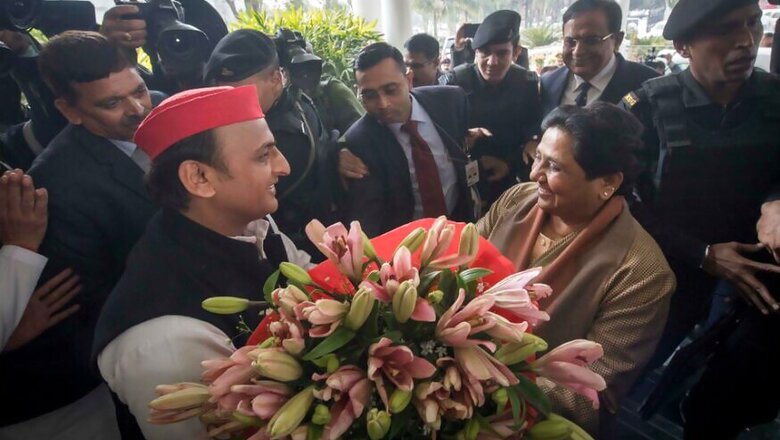
views
It was because of the 71 seats that the BJP won in UP that pushed it to a brute majority at the Centre in 2014. In 2019, the state is set to go to polls in seven phases beginning April 11.
Out of these 80 seats, the north-western region of Uttar Pradesh, also known as Rohilkhand, holds the key to nine Lok Sabha seats. These are: Aonla, Badaun, Bareilly, Kheri, Moradabad, Pilibhit, Rampur, Sambhal and Shahjahanpur. Barring Kheri and Shajahanpur, the rest will go to polls in the third phase of upcoming Lok Sabha elections.
Much like the overall landslide in the country, and more specifically in UP, the Bharatiya Janata Party (BJP) had swept Rohilkhand in 2014. The party won all the seats in the region except Badaun, which the Samajwadi Party (SP) has not lost in the last six Lok Sabha elections between 1996 and 2014.
In the 2017 Assembly elections, the BJP managed to secure 35 of the 46 seats that fall in this region. While SP won the rest, Congress and the Bahunjan Samaj Party (BSP) ended up with none. Interestingly, in 2017 Assembly polls, BJP won four of the five assembly segments that make up the Badaun Lok Sabha constituency.
If 2014 results can be viewed as an exception, Rohilkhand has swung between SP and BJP in alternate elections. From 1996 onwards till 2009, SP and the BJP have been the major players in the battle with SP maintaining a comfortable lead.
Muslim voters in the region have backed SP for the most part of the party’s existence in electoral politics. Among the constituencies with the highest Muslim population in Rohilkhand — Moradabad, Sambhal, and Rampur — Moradabad and Sambhal returned three SP legislators out of the five times that they went to polls between 1996 and 2009. During the same time span, SP won twice in Rampur.
In comparison, the party on the opposite side of the political spectrum, won only once in 1998 in Rampur in this period. Riding on the ‘Modi wave’, BJP, however, won all the three seats in 2014.
Incidentally, in 2017, SP secured nine of the 15 assembly segments that these three Lok Sabha constituencies hold. Due to this high value of Muslim votes, the parties may try to deploy the usual strategies of reaching out to Muslim clerics/leaders to draw in Muslim voters as the polling dates near.
In addition to this, Kurmis form a significant part of the electorate in the constituencies of Shahjahanpur, Pilibhit and Kheri, making the community a crucial factor in the upcoming Lok Sabha elections.
Vote Arithmetic
In 2014, when BJP had registered a whitewash in Rohilkhand as well as in UP as a whole, the party had achieved the feat with huge vote margins in majority of the constituencies. The SP and BSP had contested separately during those elections.
However, the combined vote-share of the SP and BSP was higher than the BJP. On pure arithmetic, if combined vote-share of SP and BSP is taken together, the alliance would have won seven of the nine seats in Rohilkhand. Apart from Bareilly and Pilibhit — traditional strongholds of the BJP — the alliance would have together won Aonla, Kheri, Moradabad, Rampur, Sambhal and Shahjahanpur, in addition to Badaun which SP had won in 2014.
It should be noted, however, that politics is as much about chemistry as it is about arithmetics and 2014 results might not hold in 2019.
(The report is part of a News18 Election Lab series that focuses on voting pattern of various Indian states during the Lok Sabha polls.)
Read all the Latest News, Breaking News and Coronavirus News here. Follow us on Facebook, Twitter and Telegram.



















Comments
0 comment